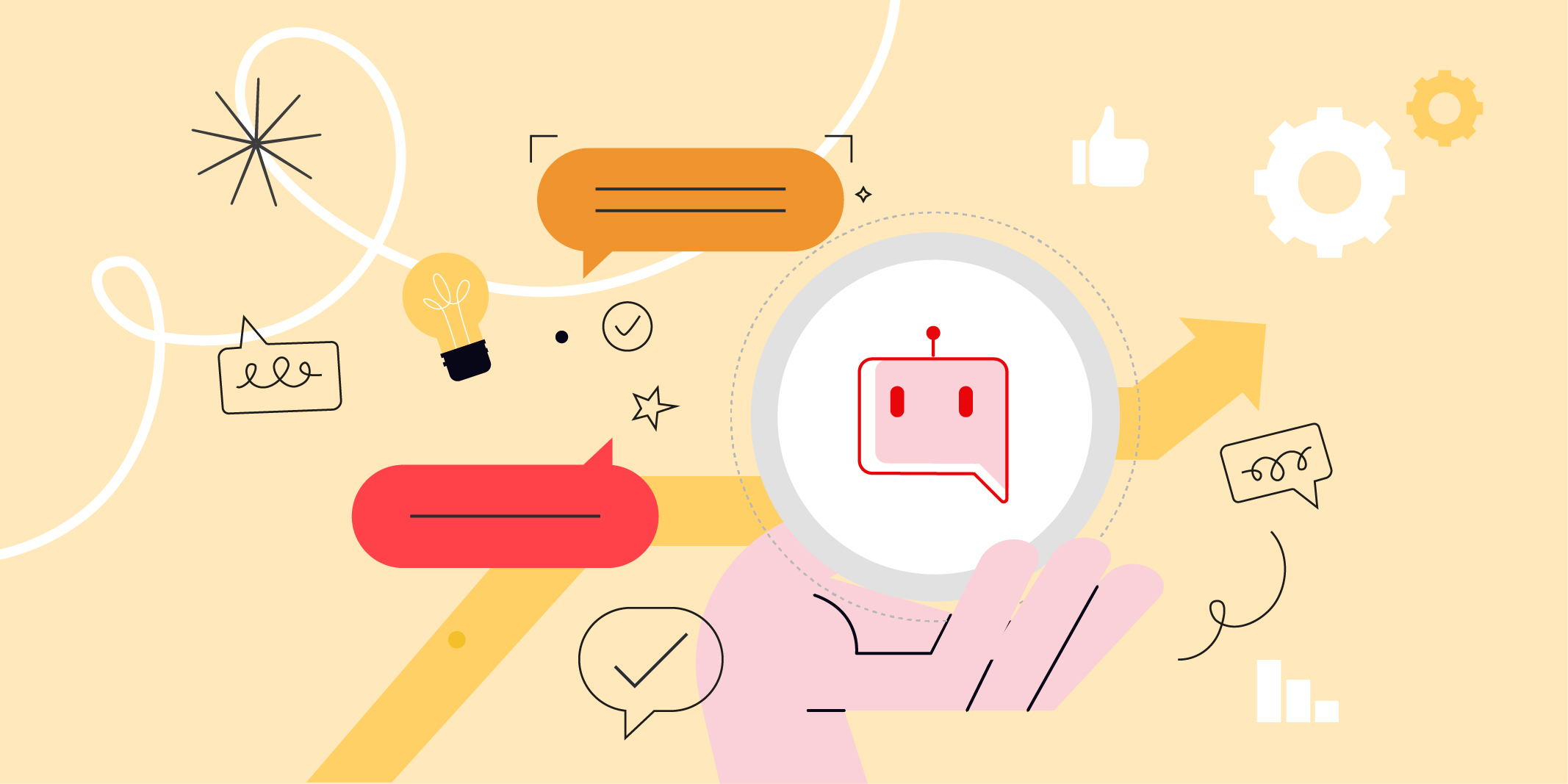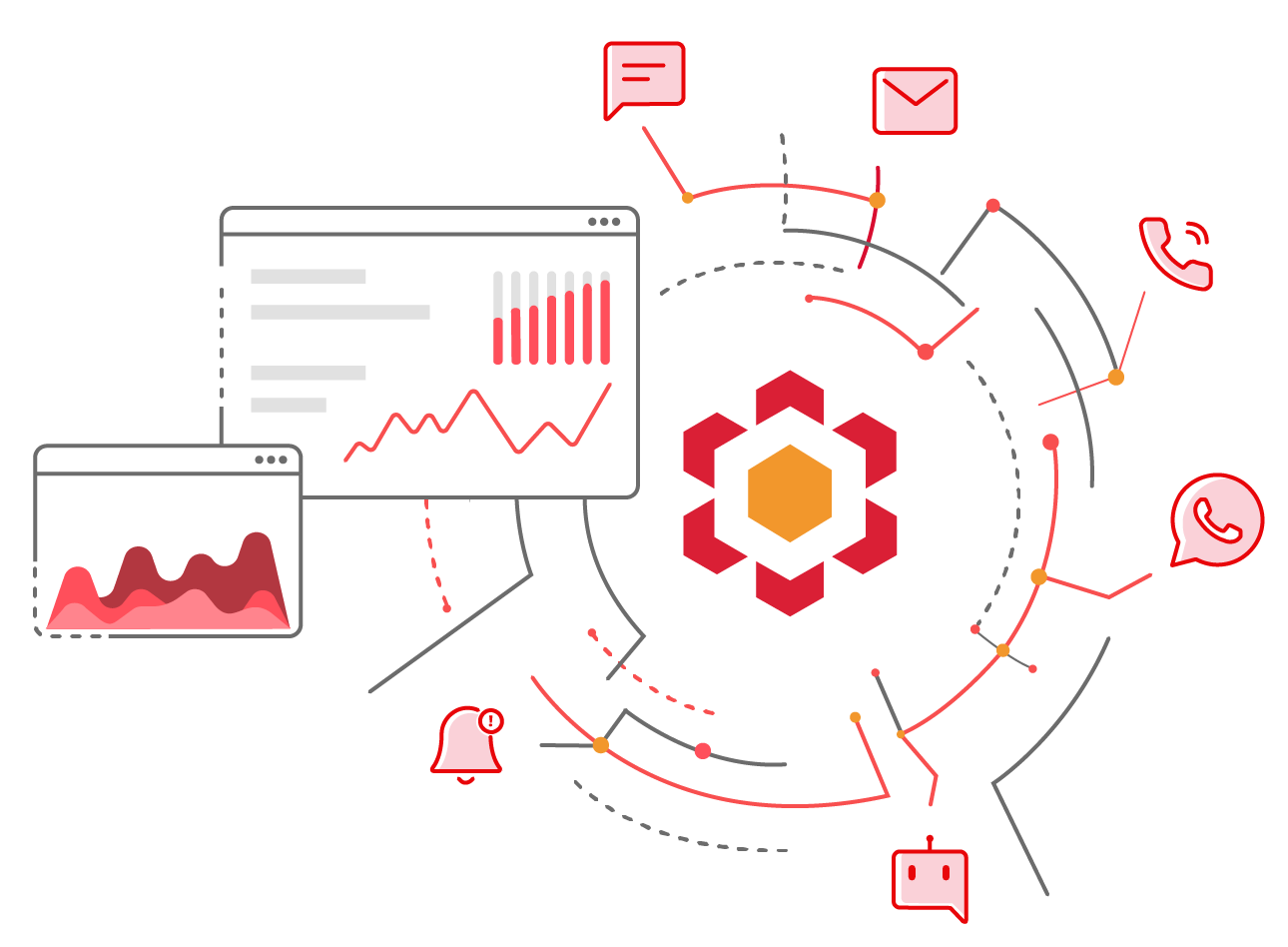
Chatbots are quickly becoming one of the most integral parts of modern businesses. Not only do they provide customer service 24/7, but they can also help you capture valuable data that can be used to better understand your customers. But how do you measure the success and effectiveness of your chatbot?
In this blog post, we’ll take a look at some key metrics you should track to determine your chatbot’s performance so that you can optimize it for improved user experience and higher ROI.
Why It’s Important to Measure Chatbot Performance?
Measuring chatbot performance is not just about supervising the technology, it’s about understanding what makes customers satisfied, and what is essential for business growth. Metrics from Chatbots can help businesses improve customer experience, and efficiency, enable businesses to take action based on performance, optimize and adapt, and make informed business decisions.
Here are some key reasons why you should consider measuring your chatbot performance.
Improving User Experience
Measuring chatbot performance helps identify flaws in the system, providing an opportunity to make improvements. For instance, a chatbot that frequently misunderstands user queries can be a significant source of frustration. By tracking metrics such as accuracy and speed, you can pinpoint the problems and fix them. This can, in turn, lead to an improved user experience and increased engagement.
Enhancing Business Outcomes
Chatbots are deployed by businesses to achieve specific goals. These goals may include reducing response time, increasing customer satisfaction, or driving sales. By measuring chatbot performance, businesses can determine whether they are achieving their objectives. Metrics such as user engagement, conversion rate, and customer retention provide insights into business outcomes. This data can then be used to adjust strategies and refine the chatbot’s performance to meet business goals.
Discovering User Behavior
By tracking metrics such as customer demographics, usage patterns, and feedback, businesses can get a better understanding of their customers. This data can be used to create more targeted marketing campaigns and personalized experiences. It can also help identify opportunities for cross-selling and up-selling, enhancing the overall customer experience.
Staying Ahead of the Competition
In today’s competitive business environment, staying ahead of the competition is essential. By measuring chatbot performance, businesses can identify areas where they are falling behind their competitors. This could be related to response time, problem resolution, or overall user experience. By addressing these issues, businesses can improve their chatbot’s performance and gain a competitive advantage.
Measuring Success
Measuring chatbot performance helps businesses measure success. It provides concrete data and metrics to evaluate the chatbot’s performance against business objectives. This data can then be used to make data-driven decisions about improving the chatbot and enhancing the user experience.
How to Measure the Success Rate of a Chatbot?
Whether it’s for customer service, e-commerce or lead generation, chatbots are designed to enhance the user experience while saving time and resources. But how do you know if your chatbot is doing what it’s supposed to do? Measuring the success of a chatbot is essential in understanding how it’s helping the business and the customers. Here are some key metrics and strategies to help you better understand and measure your chatbot’s success.
1) User Retention Rate
One of the key metrics to consider when measuring chatbot success is the user retention rate. Simply put, user retention measures how many users come back for more after their initial interaction with the chatbot. A high retention rate is an indicator that the chatbot is providing value and users are returning because they find it helpful. On the flip side, low retention rates mean that users are not finding the chatbot helpful and are not returning for more interactions.
2) Response Success Rate
Another metric that is important to consider is the response success rate. This measures how often the chatbot provides the correct answer or performs the right action. If a chatbot successfully completes tasks 95% of the time, it’s doing well. If it’s only successful 50% of the time, there’s room for improvement. It’s important to monitor the response success rate regularly to identify any issues and make necessary changes.
3) Conversation Duration
The conversation duration measures the length of time a user interacts with the chatbot. A lengthy conversation could indicate that the chatbot is providing a more complex service, such as customer service. It could also mean that the chatbot is engaging with the user in a meaningful way. Conversely, short conversations could mean that the chatbot is not providing enough value or the conversation is not personalized enough.
4) Churn Rate
The churn rate measures how often users stop using the chatbot over time. High churn rates could be an indication that the chatbot is not providing enough value to users over time. It’s important to monitor the churn rate to identify any issues and make necessary changes.
5) Customer Feedback
Customer feedback is an important metric to consider. Good feedback means that your chatbot is meeting the needs of the users, while negative feedback offers insight into areas where improvements can be made. It’s important to take feedback seriously and make changes where possible.
What are the Types of Chatbot Metrics?
Measuring chatbot performance metrics is essential in helping businesses stay ahead of the competition and maintain a positive user experience. Let’s explore the various types of chatbot metrics and how they can help businesses make informed decisions.
User Engagement Metrics
This metric measures the number of interactions that users have with the chatbot. It includes metrics like session length, number of conversations, and the number of unique users. These metrics help businesses understand how often customers are engaging with their chatbot and how long each engagement is, which gives an idea of the chatbot’s usage. It’s a valuable metric to measure the effectiveness of the chatbot’s design, user experience, and content.
Conversion Metrics
Conversion metrics measure the number of times customers take a desired action, such as purchasing a product or subscribing to a service, after interacting with the chatbot. These metrics show you how well the chatbot is converting potential customers into paying customers. Conversion metrics are crucial in helping businesses determine the ROI of the chatbot investment.
Response Metrics
Response metrics measure how well the chatbot is responding to user inquiries. It includes metrics such as response time, resolution rate, and error rate. These metrics help businesses understand how effective the chatbot’s responses are at meeting the user’s needs. Poor response metrics may indicate that the chatbot needs improvement in answering customer inquiries.
Retention Metrics
Retention metrics measure how often customers come back to engage with the chatbot, how active they are, and over what period. It includes metrics like the retention rate, churn rate, user feedback, and overall satisfaction. These metrics give businesses an insight into the chatbot’s ability to retain customer interest over time. Good retention metrics indicate that the chatbot provides a good user experience and satisfies customer needs.
Feedback Metrics
Feedback metrics measure how customers respond to the chatbot’s performance. It includes metrics like user ratings and reviews, chatbot satisfaction rates, and the frequency of customer feedback. Positive feedback metrics indicate that the chatbot is successfully meeting customer needs, while negative feedback metrics can help businesses identify areas of improvement.
Choosing the Right Metrics: Aligning with Your Business Goals
Choosing the right chatbot metrics is crucial in optimizing your chatbot’s performance and achieving your business goals. They provide important insights into how your chatbot is performing and where it needs improvement. Here’s how you can choose the right chatbot metrics that align with your business needs.
Identify Your Business Goals
To choose the right chatbot metrics, the first step is to identify your business goals. What are your business objectives, and how do you want your chatbot to help you achieve those objectives? Once you have identified your business goals, you can then determine which metrics are most relevant to your chatbot’s purpose.
Balance Qualitative and Quantitative Measures
When it comes to selecting chatbot metrics, there are two types of measures: qualitative and quantitative. Qualitative measures are subjective measures that assess the quality of the chatbot’s responses. These measures include customer satisfaction, sentiment analysis, and conversations that result in success.
On the other hand, quantitative measures are objective measures that assess the performance of the chatbot based on predefined criteria. These measures include response time, engagement rate, and conversion rates. It is important to balance both qualitative and quantitative measures to get a complete understanding of your chatbot’s performance. While quantitative measures provide important insights into the chatbot’s efficiency, qualitative measures provide insights into the customers’ experiences and perceptions.
Prioritize the Metrics
Choosing the right chatbot metrics can be overwhelming. There are many metrics that you can track, but not all of them are relevant to your business. Therefore, it is important to prioritize the metrics that align with your business goals. For instance, if your business goal is to increase customer satisfaction, then you should prioritize qualitative measures such as customer satisfaction and sentiment analysis over quantitative measures such as response time.
Choose Metrics That Can Be Acted Upon
Choosing the right chatbot metrics is not just about selecting the ones that provide the most information. It is also about selecting the ones that can be acted upon. Metrics that cannot be acted upon are useless. Therefore, when selecting metrics, ensure that they provide actionable insights that can help in making informed decisions.
Evaluate and Adjust
Finally, it is important to evaluate your chatbot metrics regularly and adjust them as needed. Your business goals may change over time, and so should your chatbot metrics. Evaluating your chatbot metrics regularly allows you to adjust your metrics to ensure they are aligned with your business goals.
What Makes a Chatbot Successful?
A successful chatbot is an essential tool for businesses in providing excellent customer service, driving sales, and fostering engagement. Let’s explore the characteristics of a winning chatbot and discuss how it can help you achieve your business goals.
The Chatbot Knows Your Customers
A chatbot’s primary purpose is to provide assistance to users. It should be designed to understand user requests and provide quick, accurate responses. Moreover, a successful chatbot should be customized to fit your audience. The bot should be aware of the common terms, slang, and tonality used by your customers. This way, it can engage with them naturally and provide a more personalized experience.
It Is Proactive
The bot should be proactive, providing information and suggestions even before the user asks for it. This means that it should have a good understanding of what customers need and should prompt them with relevant options. For example, if a customer is checking out a product, the chatbot can suggest complementary items based on their browsing history. This way, it provides value to users and helps businesses increase sales.
It Is Scalable
A successful chatbot will be able to handle an increasing number of users and requests. This means that it should be designed to process large amounts of data and provide accurate responses quickly. Moreover, businesses should invest in a reliable hosting provider to ensure that the chatbot can handle high traffic without crashing. This way, it can deliver consistent service and prevent frustrating users.
The Chatbot Is Memorable
A chatbot needs to create a positive impact and leave a lasting impression on users. This requires a design that reflects your brand’s personality and engages users in meaningful conversations beyond just answering their questions. Incorporating humor, questions, and stories can foster a deeper connection with users, leading to long-lasting relationships.
It Aligns With Business Goals
Chatbots should be designed to align with your business goals. If it’s meant to sell products, it should be able to process and track sales. If it’s designed for support, it should reduce the number of support tickets and provide faster responses. Moreover, businesses should track the performance of their chatbots, analyzing user data and feedback. This way, they can identify areas of improvement and optimize the chatbot’s performance.
Conclusion
The success of your chatbot depends on its ability to accurately simulate human conversation in a manner that accurately reflects your company’s mission and values. By understanding and tracking your key metrics, you can ensure that your chatbot is having the desired results.
Through continued refinement, testing, and measurement of these metrics, you can ensure that your chatbot is bringing about greater customer satisfaction and engagement with every improvement.
With this data-driven approach, companies can have more successful conversations with customers and create experiences that will be remembered for years to come. Ultimately, taking the time to properly measure the success of your chatbot is well worth the effort if it contributes to an improved customer experience in any capacity.

Harish Thyagarajan
Content Marketer
Supercharge Your Communication!
Get in touch with our experts who strive hard to bring the very best in cloud communications technology to you.

